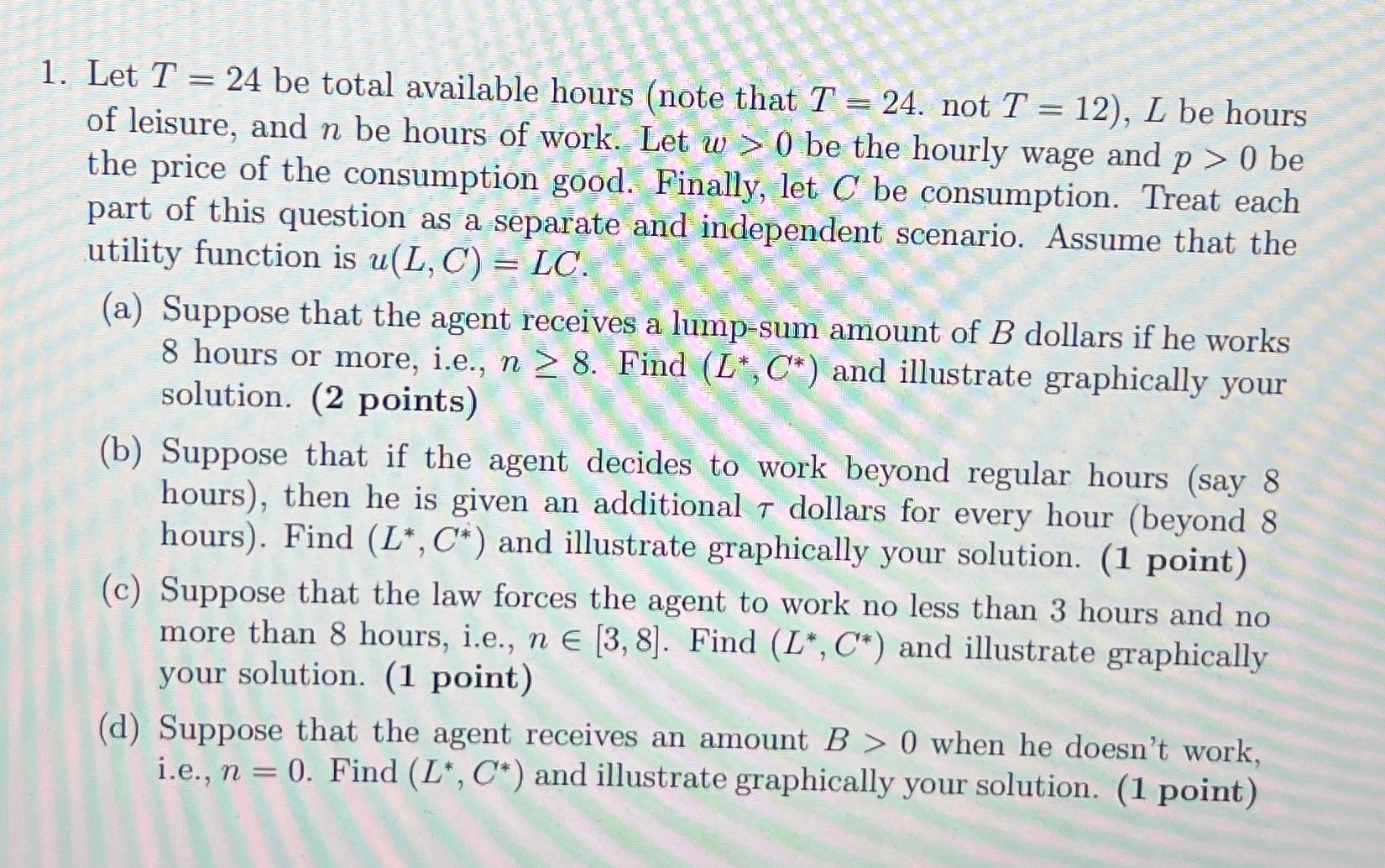Question
NEED HELP ASAP PLZ!!!Also here is some helpful tips from my teacher:Question 01, part a:For this part, consider three different cases based on the agent's
NEED HELP ASAP PLZ!!!Also here is some helpful tips from my teacher:Question 01, part a:For this part, consider three different cases based on the agent's working hours. Specifically, analyze scenarios where the agent works more than 8 hours, exactly 8 hours, or fewer than 8 hours. Each case might occur depending on parameter values. If your calculations suggest L*>16, then ensure that this is consistent with your findings. Any inconsistency here should lead you to discard this case.Question 01, part b:Here, you should examine two scenarios. In the first, consider the agent working less than 8 hours, and in the second, the agent working more than 8 hours. Apply the appropriate optimality conditions for each case and then substitute these into the corresponding budget constraints. Remove any scenarios that yield inconsistencies.Question 01, part c:You have two alternative approaches for this part. One way is to solve for the optimal L* and C* under the standard budget constraint and then sketch indifference curves that align with this solution. This can help you identify a possible corner solution. Alternatively, you could compare the Marginal Rate of Substitution for leisure (MRSL) with the Opportunity Cost of leisure to decide if the agent would prefer as much or as little leisure as possible within the constraints.Question 01, part d: To work or not to work. That is the question. For this part, consider the decision of whether to work or not. In other words, examine the case where the agent does not work and evaluate how the lump-sum amount B affects L* and C*. Since you have a jump at L=24, you need to compare the utility of working with the utility of not working to pin down L* and C*.

Step by Step Solution
There are 3 Steps involved in it
Step: 1

Get Instant Access to Expert-Tailored Solutions
See step-by-step solutions with expert insights and AI powered tools for academic success
Step: 2

Step: 3

Ace Your Homework with AI
Get the answers you need in no time with our AI-driven, step-by-step assistance
Get Started


